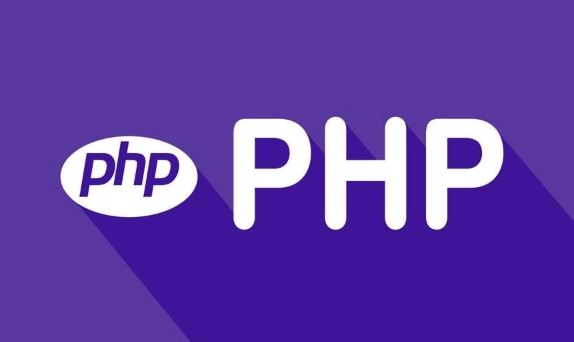If you want to build a PHP development environment locally, you can achieve it through the following steps: 1. Install an integrated environment such as XAMPP, WAMP or MAMP, or manually install Apache, PHP and MySQL respectively; 2. Set up the development directory and virtual host to facilitate multi-project management; 3. Use the PHP built-in server to quickly test small projects; 4. Configure the php.ini file to enable debugging and logging functions to troubleshoot problems. These steps can help you quickly build a stable and debug-friendly local PHP development environment.

Want to build a PHP development environment locally? Actually, it’s not that complicated, it can be done with just a few key steps. The key is to select the right tools and configure the running environment to make your code run.

1. Install the PHP running environment
The easiest way to run PHP locally is to install an integrated environment. For example, XAMPP , WAMP or MAMP , they all integrate Apache, MySQL and PHP, and one-click installation is save trouble and worry.
If you prefer manual control, you can also install it separately:

- Install Apache (or use Nginx)
- Install PHP (remember to configure php.ini)
- Install MySQL or MariaDB
Mac users may consider installing PHP with Homebrew , for example:
brew install php
Windows users can also use PHP official website to download precompiled packages, or use XAMPP .

2. Set up the development directory and virtual host (optional)
By default, XAMPP's website directory is under htdocs . You can put the project in and access it via http://localhost/project-name .
But if you want to be closer to the production environment, such as accessing a domain name like http://project.test , you need to set up a virtual host (Virtual Host).
The operation steps are roughly as follows:
- Modify Apache's
httpd-vhosts.conffile and add a virtual host configuration - Modify the local
hostsfile and add a127.0.0.1 project.test - Restart Apache, visit
http://project.testto see your project
The advantage of this is that it is easy to manage multiple projects and is closer to the actual deployment environment.
3. Quick test with PHP built-in server
If you just want to test a PHP page temporarily and don't need to start Apache, you can use the PHP's own development server:
php -S localhost:8000
Then open the browser and visit http://localhost:8000 , and you can see the contents in the current directory. This method is suitable for small projects and learning purposes, and is not recommended for complex environments.
4. Debugging and logging settings
During the development process, debugging information is very important. Make sure to enable the following settings in php.ini :
display_errors = On error_reporting = E_ALL log_errors = On error_log = /path/to/your/php-error.log
This allows you to see the error message directly on the page, and it is also convenient to view the log and troubleshoot problems. If you are using an integrated environment, remember to switch to "development mode" or manually modify the configuration file.
Basically that's it. If you choose the right tool, it is not difficult to configure. The key is to figure out the path and permissions and don’t let the “500 error” get stuck.
The above is the detailed content of Local PHP Development Environment Setup. For more information, please follow other related articles on the PHP Chinese website!

Hot AI Tools

Undress AI Tool
Undress images for free

Undresser.AI Undress
AI-powered app for creating realistic nude photos

AI Clothes Remover
Online AI tool for removing clothes from photos.

Clothoff.io
AI clothes remover

Video Face Swap
Swap faces in any video effortlessly with our completely free AI face swap tool!

Hot Article

Hot Tools

Notepad++7.3.1
Easy-to-use and free code editor

SublimeText3 Chinese version
Chinese version, very easy to use

Zend Studio 13.0.1
Powerful PHP integrated development environment

Dreamweaver CS6
Visual web development tools

SublimeText3 Mac version
God-level code editing software (SublimeText3)

Hot Topics
 Beyond the LAMP Stack: PHP's Role in Modern Enterprise Architecture
Jul 27, 2025 am 04:31 AM
Beyond the LAMP Stack: PHP's Role in Modern Enterprise Architecture
Jul 27, 2025 am 04:31 AM
PHPisstillrelevantinmodernenterpriseenvironments.1.ModernPHP(7.xand8.x)offersperformancegains,stricttyping,JITcompilation,andmodernsyntax,makingitsuitableforlarge-scaleapplications.2.PHPintegrateseffectivelyinhybridarchitectures,servingasanAPIgateway
 Creating Production-Ready Docker Environments for PHP
Jul 27, 2025 am 04:32 AM
Creating Production-Ready Docker Environments for PHP
Jul 27, 2025 am 04:32 AM
Using the correct PHP basic image and configuring a secure, performance-optimized Docker environment is the key to achieving production ready. 1. Select php:8.3-fpm-alpine as the basic image to reduce the attack surface and improve performance; 2. Disable dangerous functions through custom php.ini, turn off error display, and enable Opcache and JIT to enhance security and performance; 3. Use Nginx as the reverse proxy to restrict access to sensitive files and correctly forward PHP requests to PHP-FPM; 4. Use multi-stage optimization images to remove development dependencies, and set up non-root users to run containers; 5. Optional Supervisord to manage multiple processes such as cron; 6. Verify that no sensitive information leakage before deployment
 Building Resilient Microservices with PHP and RabbitMQ
Jul 27, 2025 am 04:32 AM
Building Resilient Microservices with PHP and RabbitMQ
Jul 27, 2025 am 04:32 AM
To build a flexible PHP microservice, you need to use RabbitMQ to achieve asynchronous communication, 1. Decouple the service through message queues to avoid cascade failures; 2. Configure persistent queues, persistent messages, release confirmation and manual ACK to ensure reliability; 3. Use exponential backoff retry, TTL and dead letter queue security processing failures; 4. Use tools such as supervisord to protect consumer processes and enable heartbeat mechanisms to ensure service health; and ultimately realize the ability of the system to continuously operate in failures.
 python check if key exists in dictionary example
Jul 27, 2025 am 03:08 AM
python check if key exists in dictionary example
Jul 27, 2025 am 03:08 AM
It is recommended to use the in keyword to check whether a key exists in the dictionary, because it is concise, efficient and highly readable; 2. It is not recommended to use the get() method to determine whether the key exists, because it will be misjudged when the key exists but the value is None; 3. You can use the keys() method, but it is redundant, because in defaults to check the key; 4. When you need to get a value and the expected key usually exists, you can use try-except to catch the KeyError exception. The most recommended method is to use the in keyword, which is both safe and efficient, and is not affected by the value of None, which is suitable for most scenarios.
 reading from stdin in go by example
Jul 27, 2025 am 04:15 AM
reading from stdin in go by example
Jul 27, 2025 am 04:15 AM
Use fmt.Scanf to read formatted input, suitable for simple structured data, but the string is cut off when encountering spaces; 2. It is recommended to use bufio.Scanner to read line by line, supports multi-line input, EOF detection and pipeline input, and can handle scanning errors; 3. Use io.ReadAll(os.Stdin) to read all inputs at once, suitable for processing large block data or file streams; 4. Real-time key response requires third-party libraries such as golang.org/x/term, and bufio is sufficient for conventional scenarios; practical suggestions: use fmt.Scan for interactive simple input, use bufio.Scanner for line input or pipeline, use io.ReadAll for large block data, and always handle
 VSCode setup for Java development
Jul 27, 2025 am 02:28 AM
VSCode setup for Java development
Jul 27, 2025 am 02:28 AM
InstallJDK,setJAVA_HOME,installJavaExtensionPackinVSCode,createoropenaMaven/Gradleproject,ensureproperprojectstructure,andusebuilt-inrun/debugfeatures;1.InstallJDKandverifywithjava-versionandjavac-version,2.InstallMavenorGradleoptionally,3.SetJAVA_HO
 SQL Serverless Computing Options
Jul 27, 2025 am 03:07 AM
SQL Serverless Computing Options
Jul 27, 2025 am 03:07 AM
SQLServer itself does not support serverless architecture, but the cloud platform provides a similar solution. 1. Azure's ServerlessSQL pool can directly query DataLake files and charge based on resource consumption; 2. AzureFunctions combined with CosmosDB or BlobStorage can realize lightweight SQL processing; 3. AWSathena supports standard SQL queries for S3 data, and charge based on scanned data; 4. GoogleBigQuery approaches the Serverless concept through FederatedQuery; 5. If you must use SQLServer function, you can choose AzureSQLDatabase's serverless service-free
 Object-Relational Mapping (ORM) Performance Tuning in PHP
Jul 29, 2025 am 05:00 AM
Object-Relational Mapping (ORM) Performance Tuning in PHP
Jul 29, 2025 am 05:00 AM
Avoid N 1 query problems, reduce the number of database queries by loading associated data in advance; 2. Select only the required fields to avoid loading complete entities to save memory and bandwidth; 3. Use cache strategies reasonably, such as Doctrine's secondary cache or Redis cache high-frequency query results; 4. Optimize the entity life cycle and call clear() regularly to free up memory to prevent memory overflow; 5. Ensure that the database index exists and analyze the generated SQL statements to avoid inefficient queries; 6. Disable automatic change tracking in scenarios where changes are not required, and use arrays or lightweight modes to improve performance. Correct use of ORM requires combining SQL monitoring, caching, batch processing and appropriate optimization to ensure application performance while maintaining development efficiency.






